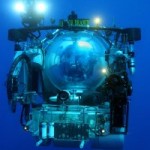 Greek mythology portrays Atlas supporting the world, but the time has come to break it to you, Atlas is a metaphor for the vast unseen majority – the microbes. The few microbes that cause blood to spew from every human orifice get all the press. Most microbes are quietly minding their business and keeping life on this planet functioning. Beer, wine, cheese, bread, Penicillin–these are not just the components of a hot date, but everyday examples of microbiology in action.
Greek mythology portrays Atlas supporting the world, but the time has come to break it to you, Atlas is a metaphor for the vast unseen majority – the microbes. The few microbes that cause blood to spew from every human orifice get all the press. Most microbes are quietly minding their business and keeping life on this planet functioning. Beer, wine, cheese, bread, Penicillin–these are not just the components of a hot date, but everyday examples of microbiology in action.
Any biogeochemical cycle out there has a microbial component. Aerosol bacteria seed clouds and alter weather. The cells in your own body are outnumbered by the bacteria living in you. You’d be one sick puppy without bacteria to help you digest food and to prevent your skin from becoming a hotel for the next available Staph infection. The foundation of symbiosis–is microbes. Primary production, both photosynthetic and chemosynthetic–microbes. The biggest source of untapped (and unknown) genetic biodiversity–c’mon, say it with me this time.
This is a microbial world and they just let us live here.
 .
.
The numbers don’t lie:
The number of prokaryotes [i.e., bacteria + archaea] and the total amount of their cellular carbon on earth are estimated to be 4-6 x 1030 cells and 350-550 Pg of C (1 Pg = 1015 g), respectively. Thus the total amount of prokaryotic carbon is 60-100% of the estimated total carbon in plants, and inclusion of prokaryotic carbon in global models will almost double estimates of the amount of carbon stored in living organisms.” (Whitman et al. 1998)
The deep-sea is a fantastic showcase for all the amazing roles that microbes play in the world:
- Numerically dominant–there are approximately 1 million bacteria and 10 million viruses in a milliliter of seawater. There are approximately 0.00000000000000000002 sperm whales per milliliter of seawater.
- Primary producers–the chemosynthetic communities found at hydrothermal vents and cold seeps are all based on bacteria and archaea that are able to make energy from geochemicals (methane, hydrogen sulfide) instead of being dependant on light from the sun. There are even bacteria that have found a way to photosynthesize in the dark.
- Symbiosis–the deep-sea is symbiosis-central: tube worms, clams, and mussels around vents and seeps all have their chemosynthetic bacterial buddies to feed them; squid and fish maintain bioluminescent bacteria in pouches for personal light shows (to get dates, confuse predators, attract supper, etc.); worms that feed on whale bones have bacterial symbionts to help them digest lipids; deep-sea corals have complex bacterial communities associated with them.
- Food–Not only as primary producers and symbionts, but bacteria aggregate to form marine snow, the manna from heaven that brings energy from the sunlit parts of the ocean down to the depths.
- Biotechnology–sponges and invertebrates are a source of a lot of interesting chemical compounds…many of which later turn out to be produced by associated bacteria. Deep-sea microbes are being screened for new drug candidates and are a source of thermostable enzymes (from vent bacteria) and cold-tolerant enzymes.
- Genetic diversity–the deep-sea is a unique environment and home to countless unusual microbial species yet to be described.
All this and more, comin’ at you, during DSN’s Microbial Week!
P.S. If you live in Florida, you can get free Penicillin at Publix (just in case). [http://www.publix.com/about/newsroom/NewsReleaseItem.do?newsReleaseItemPK=2636]
Ref: Whitman, W. B., D. C. Coleman, and W. J. Wiebe. 1998. Prokaryotes: The unseen majority. Proceedings of the National Academy of Sciences 95:6578-6583.






“There are even bacteria that have found a way to photosynthesize in the dark”
Wow, that is something I want to hear more about!
I hate to be so annoying but the drawing of atlas is inaccurate, the earth is supposed to lie on the first of his vertebrae (on the atlas vertebra) and the earth is not supposed to be round or sailors would bump onto his head while sailing
“There are approximately 0.00000000000000000002 sperm whales per milliliter of seawater.”
That really hits it home.
But the press coverage of sperm whales is 10^20 more than deep-sea bacteria.
Time Magazine is with us! How can it be coincidence?
Roy Blount Jr. posts “My Friend the Microbe” at the link here
http://www.time.com/time/nation/article/0,8599,1573213,00.html
I am pretty sure that Atlas was condemned to hold up the sky, not the earth. Blame Mercator for introducing the earth-holding falsehood.
Folks might be interested in the recent National Research Council report on metagenomics which includes ocean communities and, especially, an educational booklet on Understanding Our Microbial Planet.
See http://www.nationalacademies.org/metagenomics for complete information.